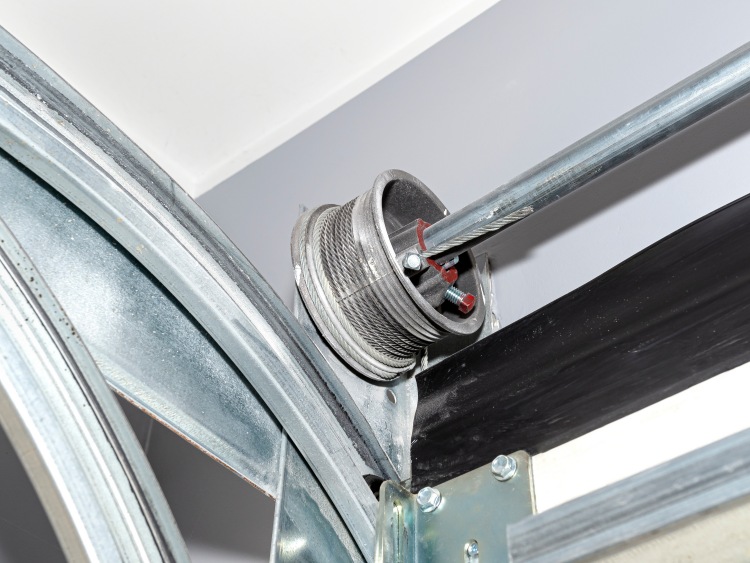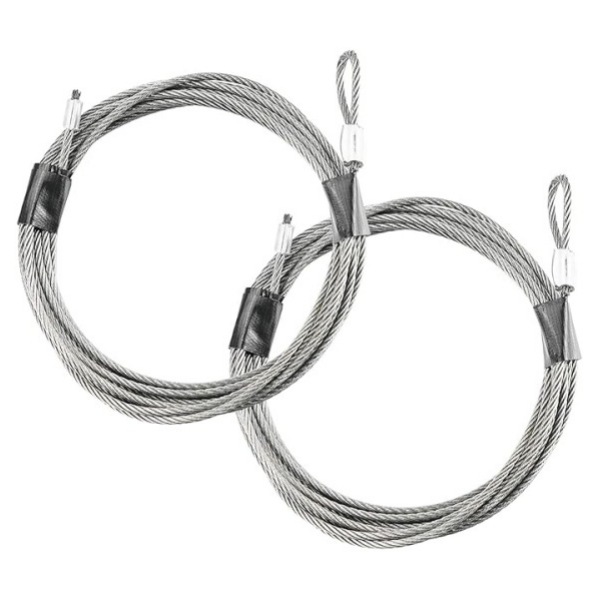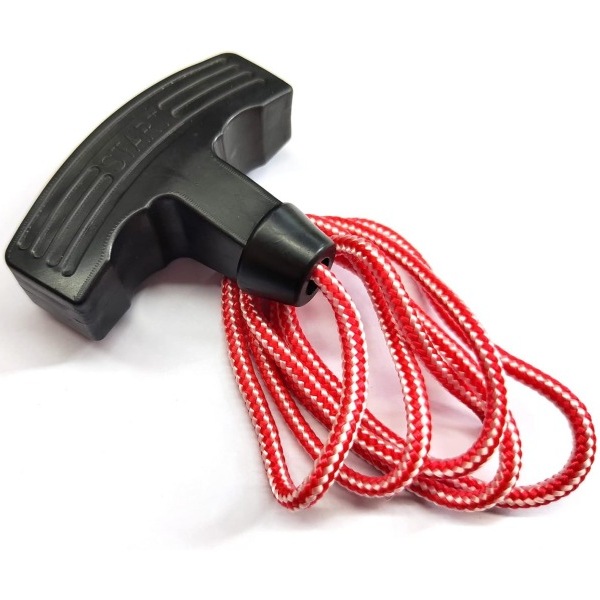Garage Door Cables: What They Do, Common Types and Other FAQs

Here at C & M Garage Doors, we’ve serviced countless garage doors across Northern Colorado – and one component we repeatedly emphasize to homeowners is the importance of properly installed and maintained garage door cables. Whether your door uses extension springs or torsion springs, the cables play a critical role in safe, smooth operation. In this article we’ll cover what these cables are, how they work, when they might be failing, and when to call in a professional.
What Are Garage Door Cables?
When you walk into your garage and hit the opener button (or lift the door manually), the door’s weight is being offset by a counterbalance system. As we mention in our guide to extension springs, those springs store energy when the door is closed and release it when the door opens.
The cables are a key component of that system. In an extension-spring setup, a cable runs from the bottom corner of the door up through a pulley and into the spring chamber area. In torsion-spring systems the cables are wound around drums and help lift the door by winding and unwinding as the door moves.
In short: the cables link the door to whatever counterbalancing mechanism your system uses and ensure that the door rises and lowers with controlled motion.
Types of Garage Door Cables
Not all garage door cables are the same. The type of cable your system uses depends on the kind of spring setup you have, the weight of your door, and the way it’s designed to lift. Each type of cable serves a unique purpose in maintaining balance, safety, and smooth motion. Understanding the differences can help you identify what your garage door needs and why regular inspections are so important.
- Lift Cables: Found in torsion spring systems, these cables wrap around drums as the door opens and unwind as it closes, carrying most of the door’s weight.
- Retaining Cables: Also called safety cables, these are used in extension spring systems to prevent a broken spring from flying loose and causing damage or injury.
- Extension Spring Cables: These cables run through a series of pulleys, connecting the bottom of the door to the extension springs mounted along the horizontal tracks.
- Torsion Spring Cables: Designed specifically for torsion spring setups, they attach to the bottom corners of the door and wind around the drums mounted on the torsion bar.
- Emergency Release Cables: Often attached to the red handle on your opener track, this cable disconnects the door from the opener in case of a power outage or motor failure.
- Safety Retention Cables: Added as an extra layer of protection, these run parallel to lift cables to catch the door if a lift cable breaks under tension.
Together, these cable types ensure your door operates efficiently and safely. While lift and torsion cables handle the heavy lifting, safety and retaining cables act as fail-safes to prevent accidents. Knowing how they differ can help you recognize when a component might need attention or replacement.
| Cable Type | Used With | Main Function | Key Safety Feature | Typical Replacement Interval |
|---|---|---|---|---|
| Lift Cable | Torsion Spring System | Raises and lowers the door by winding on the drum | Even door balance and smooth travel | 7–15 years |
| Retaining (Safety) Cable | Extension Spring System | Prevents broken spring from flying loose | Protects property and people from injury | Inspect annually |
| Extension Spring Cable | Extension Spring System | Transfers energy between springs and door | Works with pulleys for balanced lift | 5–10 years |
| Torsion Spring Cable | Torsion Spring System | Winds around drum to lift the door evenly | Ensures synchronized side movement | 7–15 years |
| Emergency Release Cable | Garage Door Opener | Disconnects door from motor during power loss | Manual control in emergencies | Replace as needed |
| Safety Retention Cable | Any spring system | Acts as backup if primary cable breaks | Prevents uncontrolled door fall | Inspect annually |
Each cable type contributes to the overall stability of your garage door system, but they all depend on proper tension and installation to work correctly. If you’re unsure which type your garage uses or suspect a problem, it’s best to have a professional inspect it. At C & M Garage Doors, we can identify your cable type, assess its condition, and recommend safe, reliable replacements to keep your door performing like new.
Why Proper Cables and Safety Cables Matter
Because cable failure can lead to serious problems. With extension springs, the springs are mounted along the horizontal tracks and are under high tension when the door is closed. Without a properly installed cable or safety cable running through the spring or alongside the cable path, a spring or other hardware failure can lead to parts flying off or the door coming down uncontrolled.
We always recommend to homeowners: if your extension-spring system does not have a safety cable, have one installed. It’s a relatively low-cost upgrade but dramatically improves safety and peace of mind.
How to Recognize Cable Problems
Here are common signs that your garage door cables (or associated hardware) may be wearing out or failing:
- The door feels heavy when you try to lift it manually or the opener seems to struggle.
- The door moves unevenly – one side seems higher than the other, or one side seems to hang.
- You hear popping, snapping or banging noises when the door opens or closes.
- You can see frayed cable strands, rust or corrosion on the cable, or loose pulleys/brackets.
- Your extension spring suddenly breaks or shows obvious signs of wear – and there’s no safety cable restraining it.
In our experience at C & M Garage Doors, these issues often indicate worn cables, mis-alignment or spring hardware that has reached the end of its service life.
Given the high tension involved in these parts, we strongly recommend *not* attempting cable or spring replacement yourself unless you are a trained garage door technician. Mistakes can lead to serious injury or property damage.
Maintenance Tips to Extend Cable & Hardware Life
Regular maintenance is one of the best ways to ensure your system – including cables – stays safe and reliable:
- Lubricate moving parts (rollers, hinges, springs) annually with appropriate lubricant (not track-grease; that can cause other issues). Doing so reduces excessive stress on cables.
- Inspect the door’s balance periodically. If you manually lift the door and it doesn’t stay about halfway open, tension might be off and cables could be under extra strain.
- Keep the tracks and bottom seal clear of debris or large gaps so the door closes squarely – mis-closing can tug unevenly on cables and cause wear.
- Check for rust or discoloration on cables and springs – early detection can avoid a cable failure that might damage panels or other hardware.
- If your door system has extension springs and you don’t have known safety cables installed, schedule an inspection. It’s an inexpensive upgrade compared to the potential cost of damage or injury.
Garage Door Cable FAQs
Because cables work under extreme tension from the springs, DIY replacement is not recommended. Improper handling can lead to severe injury. Always contact a qualified garage door technician to inspect and replace cables safely.
Frayed strands, rust, uneven door movement, or a door that feels unusually heavy when lifting are signs that the cables are wearing out. If the cable has visible damage or is slipping off the drum, it’s time to call a professional for replacement.
With regular maintenance and proper balance, most cables last anywhere from 7 to 15 years. However, environmental factors like moisture and temperature changes can shorten that lifespan, especially in unheated garages.
Yes. Even if only one cable shows visible wear or damage, the other is likely just as old and under similar stress. Replacing both ensures even lifting and prevents further strain on your garage door system.
Garage door cables work with your springs to counterbalance the door’s weight. As the door opens or closes, the cables wind or unwind around drums (in torsion systems) or move through pulleys (in extension systems) to raise and lower the door evenly and safely.
When a cable snaps, one side of the door can drop suddenly, causing the door to jam, become crooked, or even fall off its track. Because cables are under high tension, it’s unsafe to operate the door or attempt repairs until a technician replaces the damaged part.
Standard lift cables control the door’s movement, while safety cables are installed through or alongside extension springs to contain them if they break. Safety cables are essential for extension spring systems and a key feature for preventing injury or property damage.
This often happens when the door goes out of balance, the spring tension is incorrect, or the cable drum is misaligned. A professional can reset the spring tension and ensure the cables are properly seated to prevent future slippage.
Final Thoughts
Though they don’t always grab the spotlight, garage door cables are a fundamental part of your door’s counterbalance system – and they deserve the right attention. From ensuring the cables are correctly installed with safety restraints, to monitoring wear and condition through periodic maintenance, you’re protecting your family, your garage, and your investment.
If your garage door is showing signs of imbalance, heavy motion, noise, or if it hasn’t been inspected in years – contact us at C & M Garage Doors. We’ll assess the springs, cables, drums, pulleys and the entire system, and give you a clear recommendation (and not just a “patch job”). Give us a call to schedule your inspection – let’s keep your garage door safe and dependable for many years to come.




